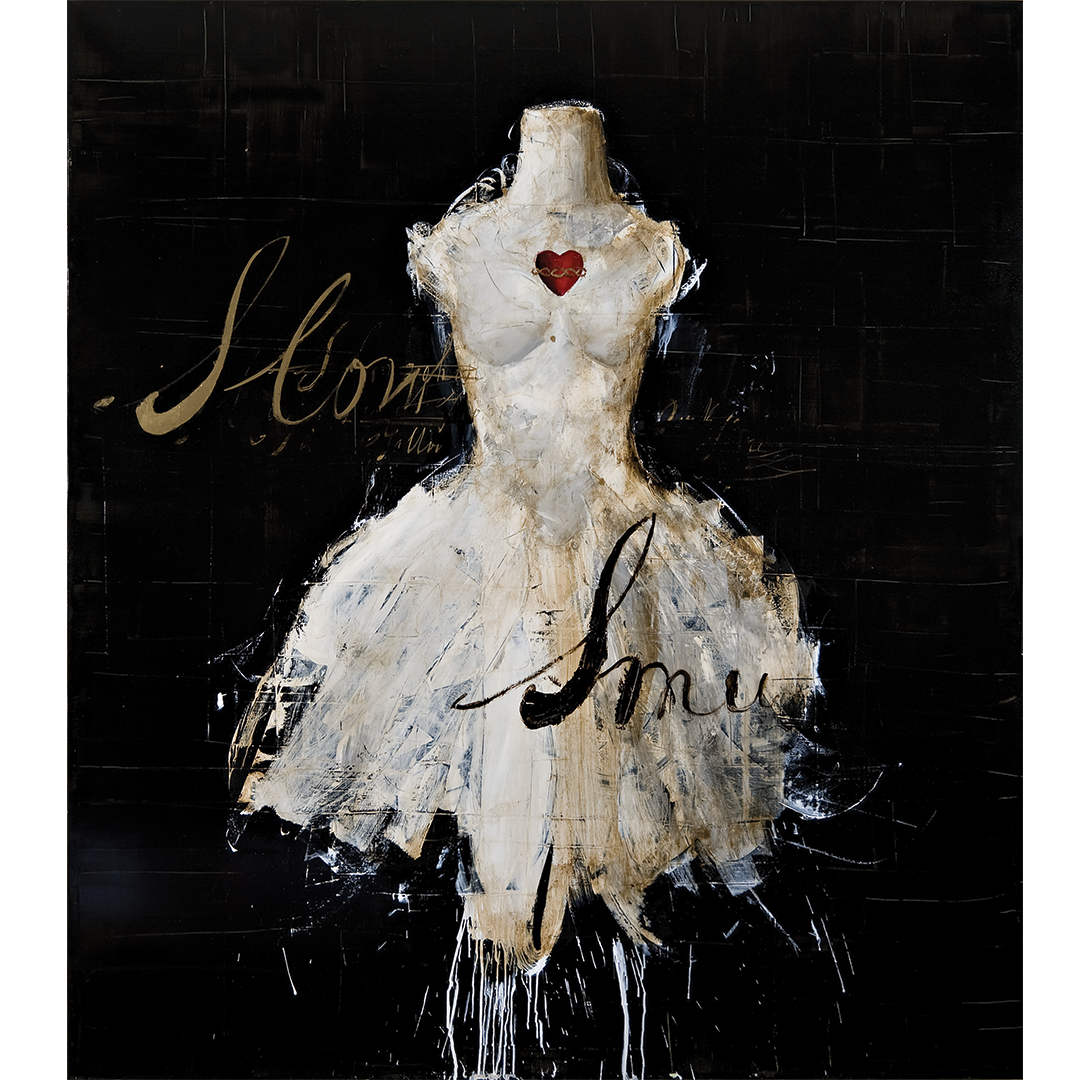Modernity and beauty are the themes of the Unipol Group's new exhibition from the artistic heritage. Thanks to the loan of a work of art by Giovanni Boldini (courtesy of Bottegantica, Milan) and the pieces from Luca Bellandi's heritage, which he supplements with his most recent productions, the 200th anniversary of the birth of the poet of modernity, Charles Baudelaire, is commemorated.
"In Baudelaire's poetry, like that of Boldini and Bellandi, clothing is no longer an accessory, but the element that defines the wearer, becoming part of her, fusing with her personality, helping to make women an ideal of beauty, defining them both contingently and universally." […] “Clothing reminds us that beauty is destined to be lost and that it always carries within itself the elements of its transience. It is the symbol of an aesthetic that is aware of the transient nature of beauty and its close link with death."

- Luca Bellandi, orientale Windows_Nippon canzone da giardino dorato, 2019, mixed media on canvas. Unipol Group's Artistic Heritage.

- Luca Bellandi, lento Im Juggler 2008, mixed media on canvas. Unipol Group's Artistic Heritage.
Upon rereading Le Peintre de la vie moderne 200 years after the birth of its author, Charles Baudelaire, it still astonishes with the modernity and topicality of the French poet's ideas and statements. The text, published in three parts in the pages of Le Figaro between 26 and 29 November 1863, is first and foremost a tribute to the work of the Parisian painter Constantin Guys, but it is also an opportunity for Baudelaire to express his views on the artistic production of his time. The author focuses in particular on the concepts of modernity and beauty, which in his view are the key elements to be applied and pursued in artistic creation, specifically in painting, and offers the reader an overview of the most appropriate themes for achieving a result that bears characteristics of its contemporary nature and is also deserving of eternal recognition. The contingent detail, the sign of one's own era, in fact, represents, according to Baudelaire, the very element that can make a modern work of art worthy of becoming antique, which therefore legitimises - and becomes complementary to - its other universal element: "Modernity is the fleeting, the transitory, the contingent, the half of art, the other half of which is the eternal and immutable. […] Although the notion of modernity mentioned above is applied by Baudelaire to various themes - including war reports, ceremonies, military portraits and cars - it is clear from reading his words that not only is the portrait the genre most capable of conveying the truth of his time, but that, given the importance attached to clothing, accessories, fashion and poses, Baudelaire suggests that the female subject is the most emblematic symbol of his era." […] "This notion of an ideal of beauty in close connection with modernity inspired the somewhat unusual - and certainly daring - dialogue between Giovanni Boldini and his Portrait of Lady Nanne Schrader and a group of works by Livorno-born artist Luca Bellandi presented in the exhibition."
(text by Alice Ensabella)

- Giovanni Boldini, Ritratto di Lady Nanne Schrader, nata Wiborg, 1903, oil on canvas. Courtesy Bottegantica Milano.

- Luca Bellandi, Ballata notturna, 2021, mixed media on canvas.

- Luca Bellandi, Danza notturna, 2021, mixed media on canvas.

- Luca Bellandi, Nigth move, 2021, mixed media on canvas.

- Luca Bellandi, Sentimi, 2021, mixed media on canvas.

- Luca Bellandi, Un altro spazio, 2021, mixed media on canvas.

- Luca Bellandi, Onda di notte, 2021, mixed media on canvas.
